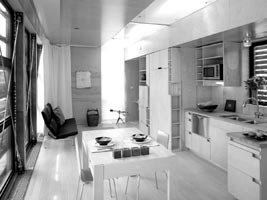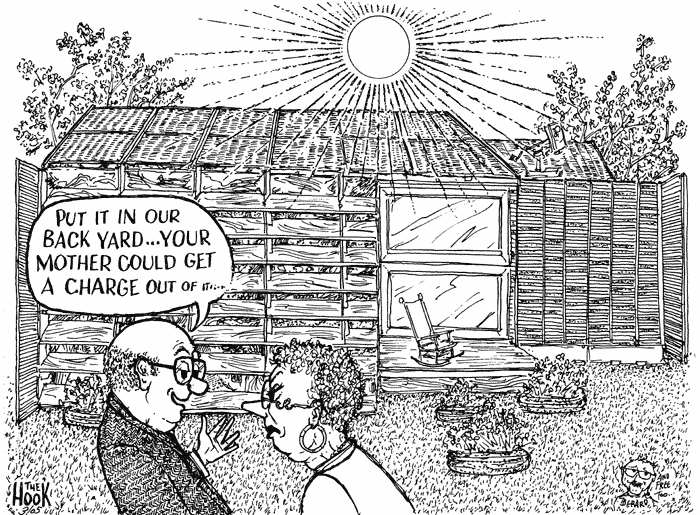Get your 'goat': Solar house needs home
Usually, a house for sale means people will be moving. But for the Solar Decathlon House, an eco-friendly structure built by a UVA team, it's the house that will soon have a new address.
Fortunately, the structure was made for mobility, In fact, after its creation as a prototype of sustainable design, it was trucked from the Crozet lot where it was built to the Mall in Washington, D.C., where it won several awards.
Right now it's back in Crozet, but not for long. UVA has donated the structure to a non-profit that wants to sell it as a fundraiser. Why would anyone want to buy a 750 square-foot house made of recycled materials and dubbed by its own creators the "Trojan Goat"?
"Anyone who's interested in a well-designed environment and is energy conscious would thrive in it," says Jason Johnson, a UVA architecture school assistant professor.
Local real estate broker Roger Voisinet thinks the prototype could be an economical buy for a "well-educated, sophisticated professional– someone who doesn't need a lot of space."
A big perk of the house is no monthly electric bills, says Stu Armstrong, executive director of the Piedmont Housing Alliance. The Alliance, which has become a leader in providing affordable housing options, will sell the house as soon as paperwork with the University is complete, he says.
Because solar panels provide all the energy for the house, the owner will have no power bills. In fact, Armstrong says it's conceivable that the house might create surplus energy, making it potentially possible to sell energy back to the "power grid."
Among the recycled materials in the building: wooden shipping pallets, reclaimed copper, and stones salvaged from the steps of UVA's Rotunda.
Until now, the house's big claim to fame was taking second place in the Department of Energy's 2002 "Solar Decathlon," first place in the Design & Livability portion of the competition, and a special award naming its creators the "most forward thinking" team.
UVA's departments of engineering and architecture worked the project into their curricula to make it happen.
"The UVA team attempted to integrate more solar strategies and did it more successfully than any other team," wrote the judges. "The work of the architecture and engineering students complemented each other in a way that set them apart from the other teams."
Team leader and assistant professor of architecture John Quale says the prototype cost about $300,000 to build, but he says that a builder could probably duplicate it for under $175,000. In mass production, he figures the price could drop to under $125,000– although he acknowledges that's "very pricey." Just moving it (it disassembles into three pieces) could cost around $20,000, says Quale, though he has no idea how much money the sale will bring.
Why is it called the Trojan Goat?
"Like a goat, it can live anywhere on anything," Quale says. "Like the Trojan Horse, it's a slightly mysterious box that unfolds and reveals a carefully refined interior."

The Solar House
PHOTO COURTESY UVA

#